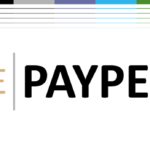Credit card fraud is a problem that affects banks, merchants, credit card providers and individual consumers all at once, as fraudsters deploy a wide variety of different tactics to pay for goods and services or drain customer accounts of funds and data. Card providers have developed various defenses against card fraud, including multifactor authentication, biometrics and behavioral analytics. Still, many of these methods have proven ineffective or will quickly become so when fraudsters find loopholes or workarounds.
One promising step was the development of 3D Secure, an extra authentication layer to ensure card users were who they said they were, but this protocol faced criticism due to its requirement for additional customer authentication that caused friction and cart abandonment. Fixing these flaws is the primary goal of 3D Secure 2.0 (3DS2), which leverages authentication data, artificial intelligence (AI) and machine learning (ML) to review transactions made by payment cards. This additional layer is primarily seamless to customers but can reduce credit card fraud by up to 40% while approving as much as 95% of transactions instantly without any needed inputs from the consumer.
In the March edition of the Digital Fraud Tracker®, PYMNTS explores the latest in the world of fraud prevention, including the types of credit card frauds merchants face and how 3D Secure resulted in increased customer friction when trying to prevent fraud. It also explores how the implementation of 3DS2 has improved fraud prevention protocols for banks, merchants, credit card providers and individual consumers while providing a more seamless experience for credit card users.
Developments From the World of Digital Fraud
 Untold billions of dollars have been spent on fraud prevention, but cybercrime continues to wreak havoc on businesses of all sizes. A recent survey found 67% of companies have been victimized by external fraud in the last 12 months, with 42% of these victims reporting they experienced up to a 1% revenue loss due to these cyberattacks. Research predicts that the total fraud losses between 2021 and 2025 will total $206 billion, with bad actors deploying tactics such as phishing, social engineering and fake apps designed to scam company employees.
Untold billions of dollars have been spent on fraud prevention, but cybercrime continues to wreak havoc on businesses of all sizes. A recent survey found 67% of companies have been victimized by external fraud in the last 12 months, with 42% of these victims reporting they experienced up to a 1% revenue loss due to these cyberattacks. Research predicts that the total fraud losses between 2021 and 2025 will total $206 billion, with bad actors deploying tactics such as phishing, social engineering and fake apps designed to scam company employees.
In light of these concerning cybercrime trends, the U.K. announced that it would be strengthening its know your customer (KYC) rules several years ago, and these new rules officially go into effect in March. These new rules may require more stringent authentication by the individual consumer; however, as online retailers and payment service providers (PSPs) will be required to verify customer identities before processing transactions. The rules will apply when a customer makes an electronic payment, accesses their payment account online or does any action that runs the risk of payment fraud.
For more on these and other digital fraud news items, download this month’s Tracker.
American Express on the Improved Customer Experience of 3DS2
3D Secure was meant to be the end-all, be-all of credit card prevention when it debuted in 1999, but it quickly ran into customer experience issues. Solving these problems was the primary objective of 3DS2, and for the most part, it seems to have succeeded.
In this month’s Feature Story, PYMNTS talked to JJ Kieley, vice president of payment products at American Express, about the drawbacks of 3D Secure, what led issuers to reconsider their approach and how 3DS2 improves on the original version.
PYMNTS Intelligence: How 3DS2 Seamlessly Prevents Credit Card Fraud
Credit card fraud is a pressing issue for consumers, merchants, banks and card providers, costing them $32.01 billion in 2021, and 3D Secure proved to be more trouble than it was worth for many consumers. 3D Secure has seen massive improvements since, however, with the introduction of 3D Secure 2.0 in 2016.
In this month’s PYMNTS Intelligence, PYMNTS explores how 3DS2 works, what makes it superior to its first iteration, and how implementing this security protocol can benefit banks and merchants.
About the Tracker
The Digital Fraud Tracker®, done in collaboration with DataVisor is your go-to monthly resource for updates on trends and changes in digital fraud prevention.








